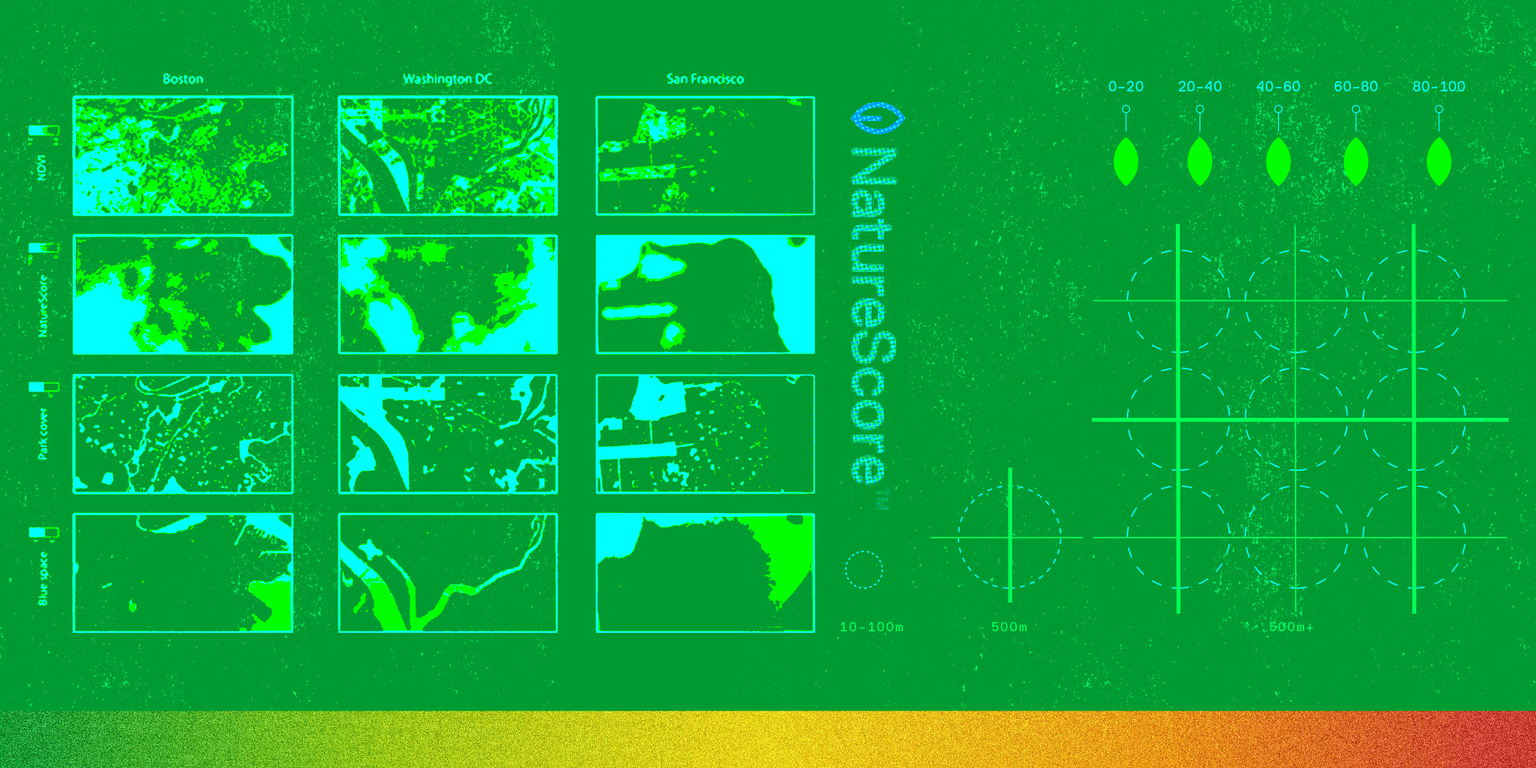Racial, Ethnic, and Socioeconomic Disparities in Multiple Measures of Blue and Green Spaces in the United States
A recent paper co-authored by NatureQuant found that the disparities in nature access may explain some of the differences in health outcomes we observe in different communities (nature is a powerful "environmental determinant of health"). Furthermore, NatureScore is an elegant tool to identify areas of nature deficiency.

Read The Paper
https://ehp.niehs.nih.gov/doi/10.1289/EHP11164
Racial, Ethnic, and Socioeconomic Disparities in Multiple Measures of Blue and Green Spaces in the United States
Abstract
Background
Several studies have evaluated whether the distribution of natural environments differs between marginalized and privileged neighborhoods. However, most studies restricted their analyses to a single or handful of cities and used different natural environment measures.
Objectives
We evaluated whether natural environments are inequitably distributed based on socioeconomic status (SES) and race/ethnicity in the contiguous United States.
Methods
We obtained SES and race/ethnicity data (2015–2019) for all U.S. Census tracts. For each tract, we calculated the Normalized Different Vegetation Index (NDVI) for 2020, NatureScore (a proprietary measure of the quantity and quality of natural elements) for 2019, park cover for 2020, and blue space for 1984–2018. We used generalized additive models with adjustment for potential confounders and spatial autocorrelation to evaluate associations of SES and race/ethnicity with NDVI, NatureScore, park cover, and odds of containing blue space in all tracts (n=71,532) and in urban tracts (n=45,338). To compare effect estimates, we standardized NDVI, NatureScore, and park cover so that beta coefficients presented a percentage increase or decrease of the standard deviation (SD).
Results
Tracts with higher SES had higher NDVI, NatureScore, park cover, and odds of containing blue space. For example, urban tracts in the highest median household income quintile had higher NDVI [44.8% of the SD (95% CI: 42.8, 46.8)] and park cover [16.2% of the SD (95% CI: 13.5, 19.0)] compared with urban tracts in the lowest median household income quintile. Across all tracts, a lower percentage of non-Hispanic White individuals and a higher percentage of Hispanic individuals were associated with lower NDVI and NatureScore. In urban tracts, we observed weak positive associations between percentage non-Hispanic Black and NDVI, NatureScore, and park cover; we did not find any clear associations for percentage Hispanics.
Discussion
Multiple facets of the natural environment are inequitably distributed in the contiguous United States. https://doi.org/10.1289/EHP11164
Read The Paper
https://ehp.niehs.nih.gov/doi/10.1289/EHP11164